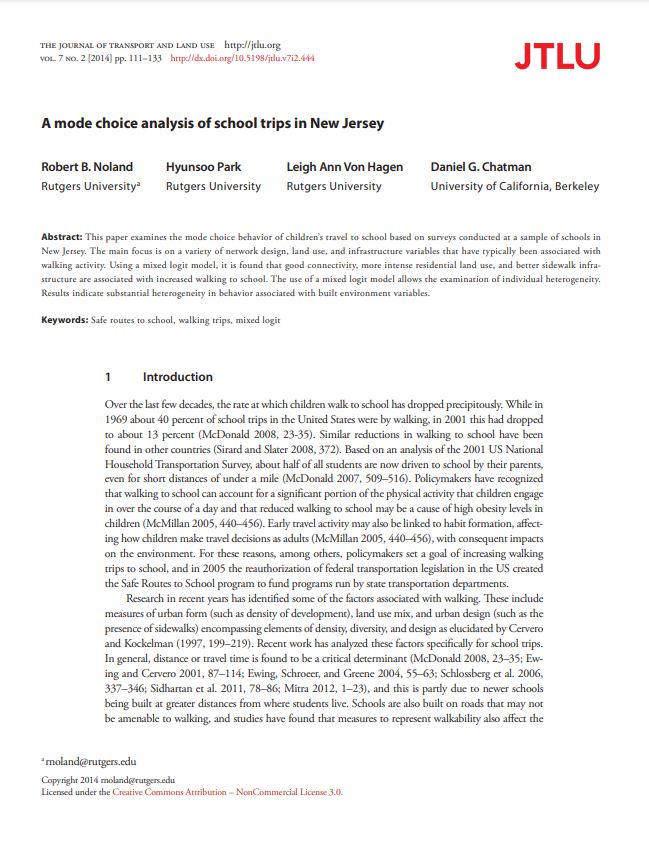Abstract
This paper examines the mode choice behavior of children’s travel to school based on surveys conducted at a sample of schools in New Jersey. The main focus is on a variety of network design, land use, and infrastructure variables that have typically been associated with walking activity. Using a mixed logit model, it is found that good connectivity, more intense residential land use, and better sidewalk infrastructure are associated with increased walking to school. The use of a mixed logit model allows the examination of individual heterogeneity. Results indicate substantial heterogeneity in behavior associated with built environment variables.
